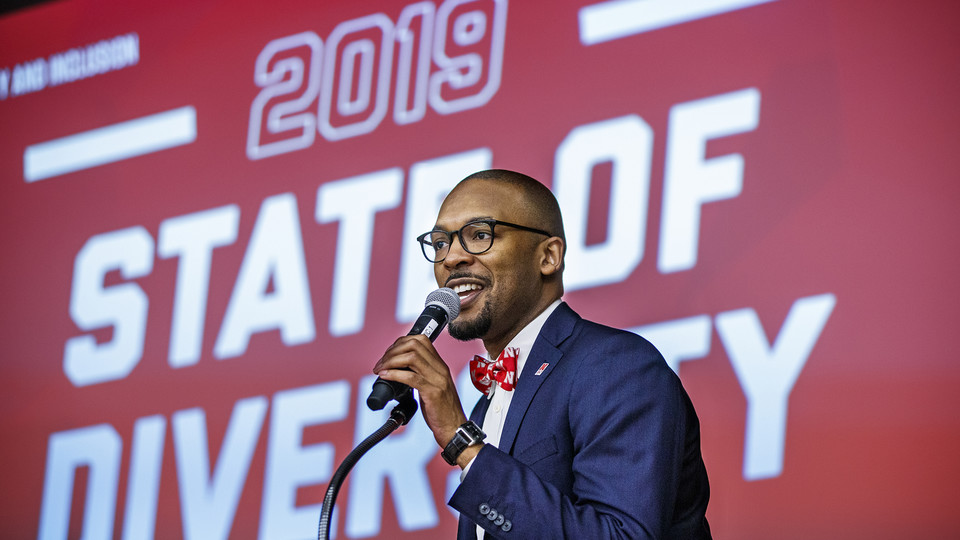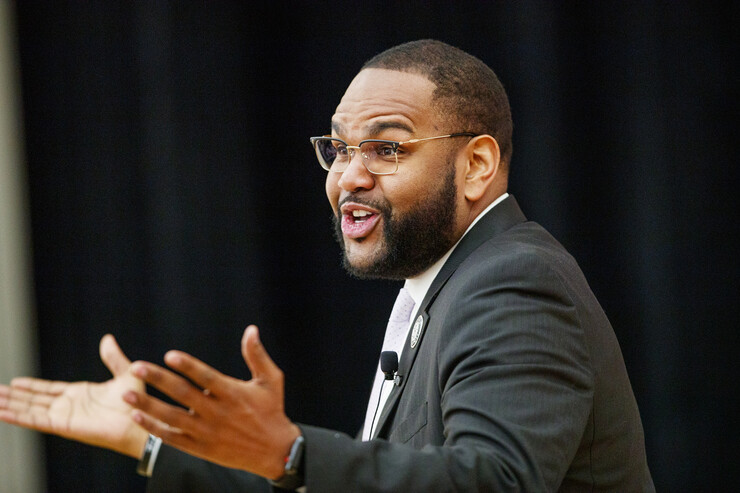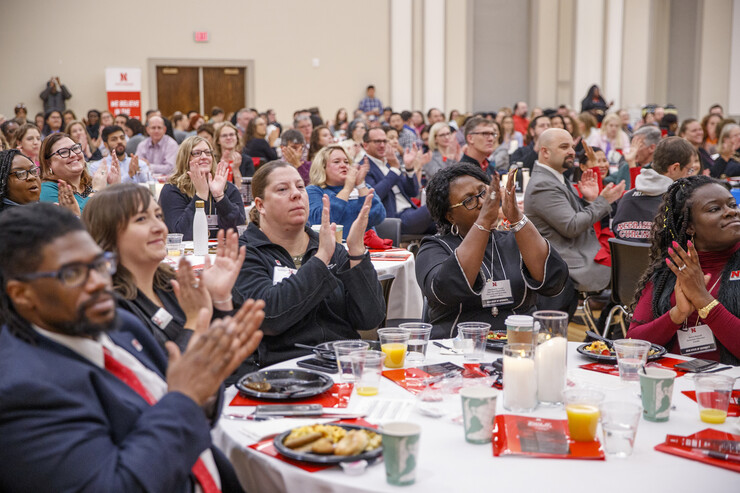· 2 min read
Barker marks first 150 days with diversity summit

Marco Barker, the University of Nebraska-Lincoln’s inaugural vice chancellor of diversity and inclusion, marked his first 150 days with the 2019 State of Diversity summit on Oct. 29.
Nearly 280 students, faculty and staff attended the presentation in the Nebraska Union Ballroom. Attendees were briefed on current diversity and climate data, efforts and successes made prior to Barker’s arrival and how the Office of Diversity and Inclusion is proceeding.
Barker’s central message during the summit was that it will take the work of each member of the university community to reach inclusive excellence.
“Our institution was built on the premise of providing access, and we can’t negate that,” Barker said, drawing upon the new university strategic plan, and highlighting that every person, every interaction matters. “All of our work has to be centered on inclusive excellence as a mindset.”
In the first 150 days, Barker and colleagues in the Office of Diversity and Inclusion have met with university stakeholders and alumni, campus leadership and community groups; held group meetings with campus groups; hosted an administrative diversity retreat; formed the Diversity Engagement Team; and set eight priorities for the office. Those priorities are communication, culture and climate, leadership development, learning and education, policy and practice, strategy and branding.
The presentation included Angela Mercurio, a Nebraska alumnae and NCAA Woman of the Year, heralding (via a livestream) the university’s commitment to diversity and inclusion, and an address from Maurice Stinnett, vice president for diversity and inclusion with BSE Global of Brooklyn, New York.
Stinnett’s talk implored the audience to use the “A, B, C’s of Inclusive Leadership” – advocacy, bravery and compassion.
Using his own life story as child growing up among violence and apathy in Springfield, Ohio, Stinnett shared with the audience how these principles changed his own trajectory, and can help make the campus climate more inclusive.
“Each one of you are called to be an advocate to move this work forward, and it takes courage to be an advocate,” Stinnett said. “Do not sympathize someone into mediocrity. They do not need your sympathy. They need your empowerment.”
Stinnett said all must be brave to step outside their box and have uncomfortable conversations and to approach others with compassion.
“Anchor yourself in that compassion.” he said. “If you’re open, that’s when transformation happens.”
Barker echoed these thoughts, calling on his colleagues to engage in “critical leadership.”
“In order for us to realize the importance, the benefits and the outcomes of inclusive excellence and diversity, we have to be critical leaders — to take on individually, the responsibility to see our institution as a truly shared, engaged community, where we make decisions for the betterment of the institution and not for ourselves,” Barker said.
Barker also outlined next steps for the university. They include:
Form a Community of Excellence. This community will be a large forum of learning community for faculty, staff and students who have an interest in advancing diversity and inclusion.
Increase universitywide learning experiences. The Office of Diversity and Inclusion will increase learning and professional development by first, identifying and building partnerships with departments who already offer institution-wide education, and second, creating new programs where there are emerging needs.
Support and map unit-specific diversity strategies. Across the institution, there are varying missions and operations that are specific to the function, discipline and professional community; therefore, colleges, departments and units will develop unit-specific strategies that reflect the nuances, but still align with university goals. The Office of Diversity and Inclusion will work with the units to develop, refine or revisit unit-specific diversity strategies.
Develop a diversity newsletter. A monthly newsletter will be developed to feature upcoming diversity events or activities, opportunities for professional development, important announcements and inclusive excellence stories featuring students, staff, faculty and alumni.
Continue to build leadership capacity. The Chancellor’s Executive Leadership Team and the Council of Inclusive Excellence and Diversity will engage in on-going learning and will lead efforts in setting diversity strategies in their respective college or administrative unit.
Details on the Office of Diversity and Inclusion’s work in its first 150 days are available in a special report made available during the summit.









